As we progress in the digital age, in-person transactions and traditional paper business cards are slowly fading.
Two forefront technologies - NFC vs. QR Code, stand proudly at the center, enhancing our everyday lives with fast, secure, and seamless touchpoints. But what exactly are they, and how do they differ?
Let's delve into each of these fascinating technologies.
What is NFC?

NFC, standing for Near Field Communication, is a short-range wireless connectivity technology that allows two devices to communicate when brought within a few centimeters of each other.
You might have already used NFC without even realizing it. If you've ever passed your smartphone over a payment terminal to make a purchase, you've likely used NFC.
NFC works based on radio frequency identification (RFID) concepts. An NFC device, such as a smartphone, can act as an NFC reader or an NFC tag. As a reader, it can retrieve data from NFC tags. In contrast, as a tag, it can send data to other NFC devices or receive data from an NFC reader.
What is a QR Code?
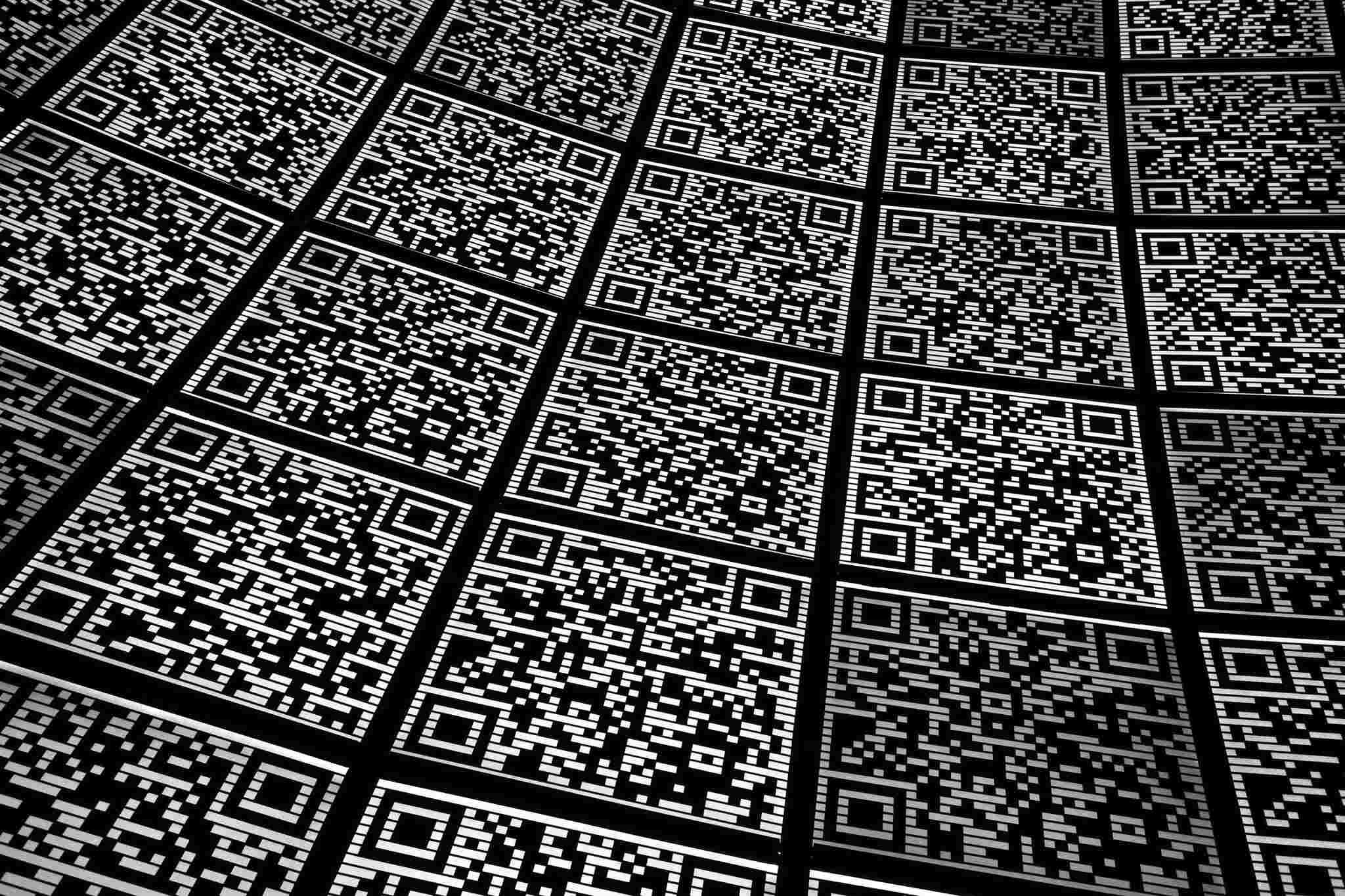
On the other hand, a QR Code or Quick Response Code is a two-dimensional barcode that can be scanned using a smartphone's camera or a QR reader device. Once scanned, it quickly provides access to digital content – be it a webpage, a video, a contact card, or a WiFi password.
QR codes entered the automotive industry but have found innumerable uses in today's digital world. They are both user-friendly and versatile, capable of holding a significant amount of data compared to traditional barcodes.
In the battle of "QR code vs. NFC," these two technologies reign in the arena with their unique capabilities. We will explore their comparisons and use cases in this guide. Stay tuned as we decode the future of business cards and more.
How Are NFC and QR Codes Used?
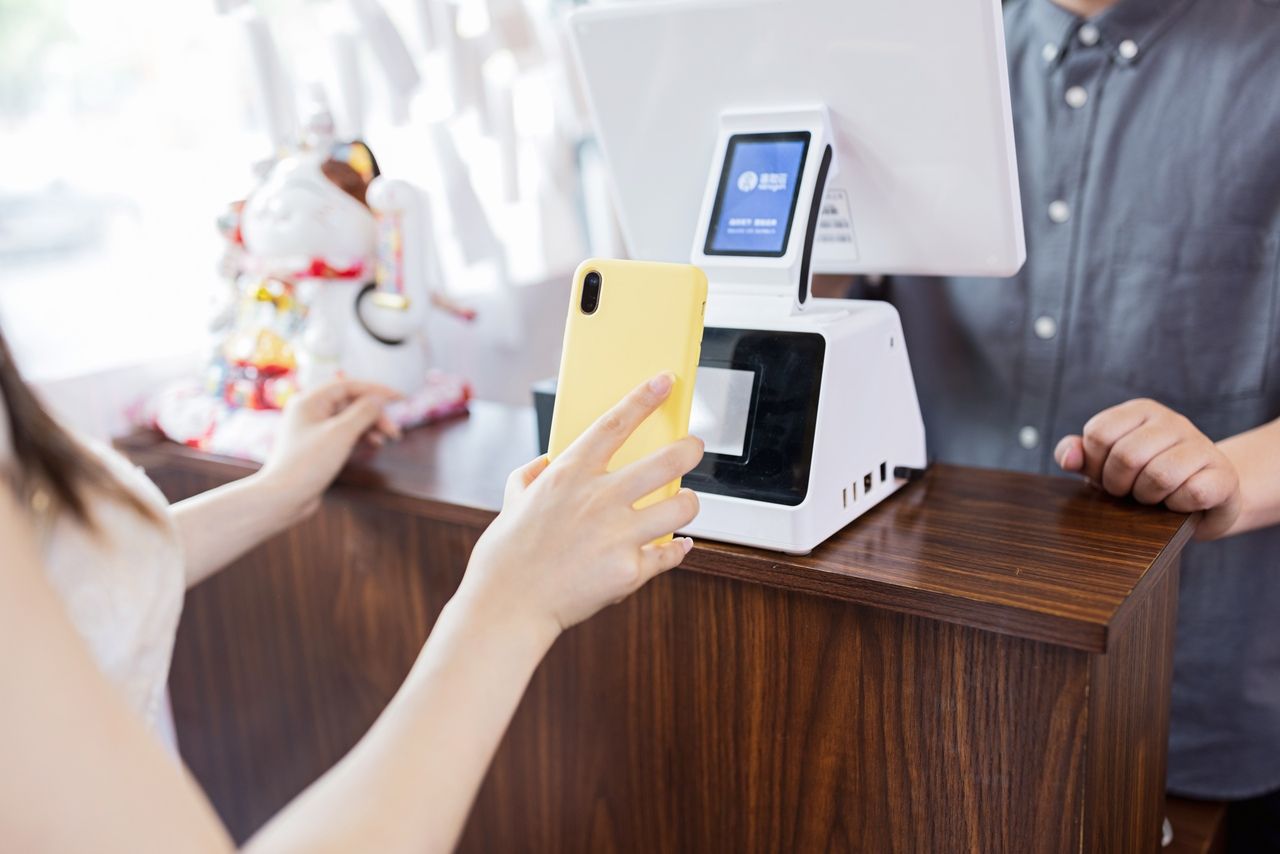
New technologies like Near Field Communication (NFC) and Quick Response (QR) codes have revolutionized how we interact with data. None more so than in the world of business cards, mobile payments, and sharing information. In exploring "QR code vs. NFC," let's examine their uses in these areas.
In Business Cards
It's increasingly common for professionals to trade in traditional paper-based business cards for digital alternatives. The driving force behind this shift? NFC and QR codes.
NFC Business Cards
In the case of NFC business cards, the NFC chip embedded within the card stores the owner's contact details. When the card is tapped against an NFC-enabled smartphone, the user's contact information is instantly displayed on the screen, facilitating quick and easy contact addition.
In the 'NFC vs. QR code business card' battle, NFC has a major advantage of seamless interaction. Just a tap against a compatible device, and voila - your contact info is shared without requiring any apps.
Imagine being at a networking event, avoiding the hefty exchange of traditional business cards, and instead tapping your NFC-enabled business card against a potential client or partner's phone. Convenient, right?
QR Code Business Cards
A QR code business card, on the other hand, requires the prospect to point their phone's camera at the QR code printed on the card. Once scanned, the smartphone prompts the user to take an action, like opening a webpage or saving contact information.
QR code business cards offer the similar advantage of eliminating paper while being cost-effective. They also provide flexibility in terms of linking to websites, specific landing pages, or digital media, providing a rich user experience.
This reinforces the point that when facing off NFC vs. QR code business cards, both bring their unique strengths to the table.
In Mobile Payments
When you're rushing through a checkout line or grabbing a quick latte at your favorite café, NFC and QR codes play a significant role in making your transaction quick, easy, and touchless.
NFC in Mobile Payments
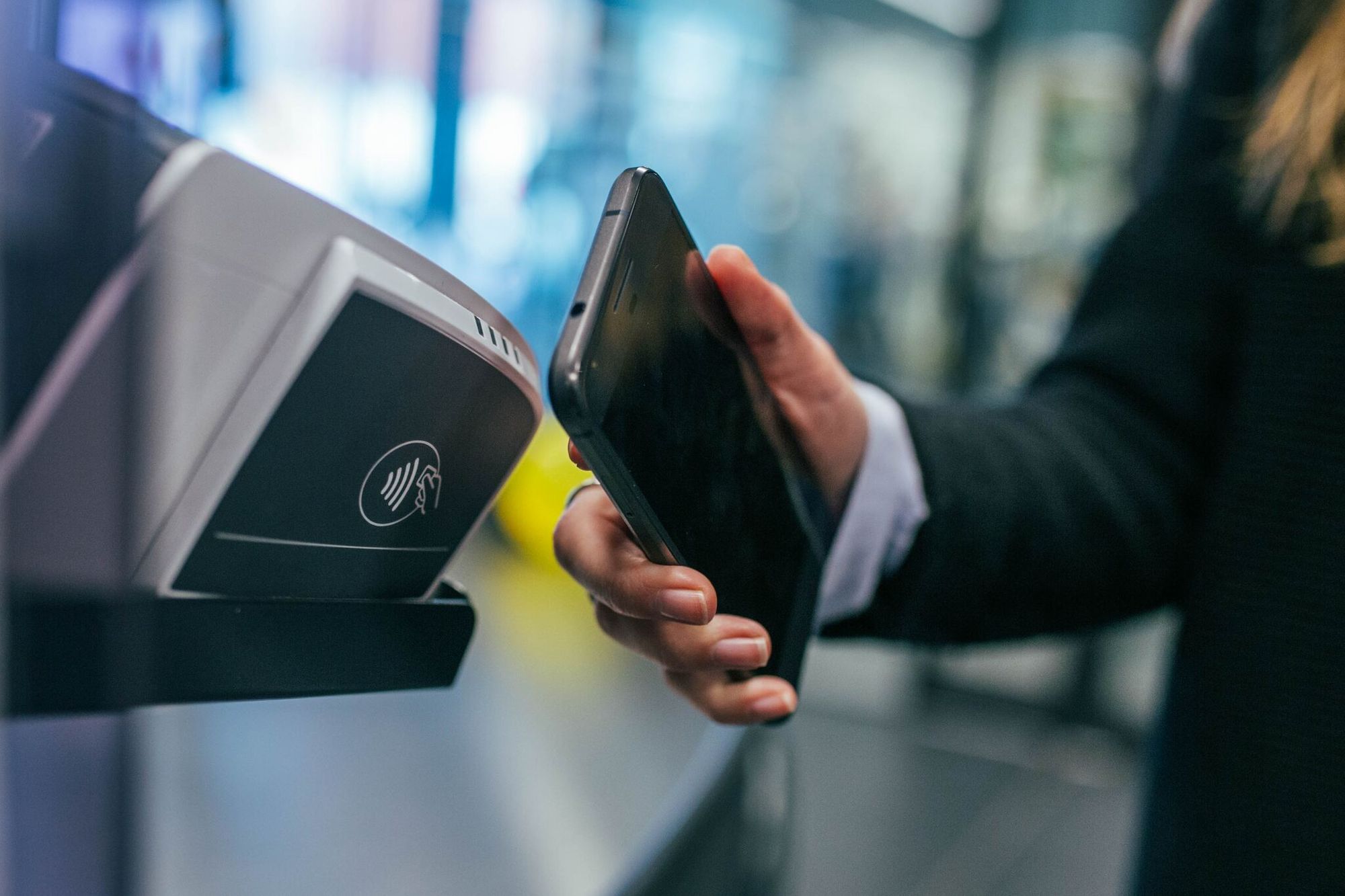
NFC, a contactless payment method, is often the technology working behind the scenes of your favorite mobile payment apps like Google Pay or Apple Pay. Your smartphone communicates with the payment terminal using NFC to securely transmit payment information, all within seconds.
Yet, NFC's role isn't just limited to payment processing. As a two-way communication protocol, it can also provide customers with digital receipts, loyalty program updates, and more, thanks to its innovative pairing with mobile wallets.
QR Codes in Mobile Payments
Meanwhile, QR codes are the force behind mobile payment giants in Asia - WeChat Pay and Alipay.
Customers scan a static QR code at the register with their smartphone to execute the payment, or the cashier scans a dynamic QR code displayed on the customer's mobile device.
Though not as speed-efficient as NFC payments, QR code payments require no special terminal, making them an affordable, accessible option for small and medium businesses.
Therefore, in the game of 'QR code vs. NFC,' each brings unique advantages to mobile payments - with NFC dominating in speed and user experience and QR codes providing accessibility and affordability.
In Information Sharing
In our increasingly digital world, easily sharing and accessing information is crucial. NFC and QR codes again come to our rescue.
NFC in Information Sharing
Imagine tapping your smartphone against a movie poster embedded with an NFC tag to instantly access a trailer or tapping an NFC-tagged museum artifact to learn more about its history.
From tourism to healthcare, NFC tags open a world of quick and interactive information sharing.
QR Codes in Information Sharing
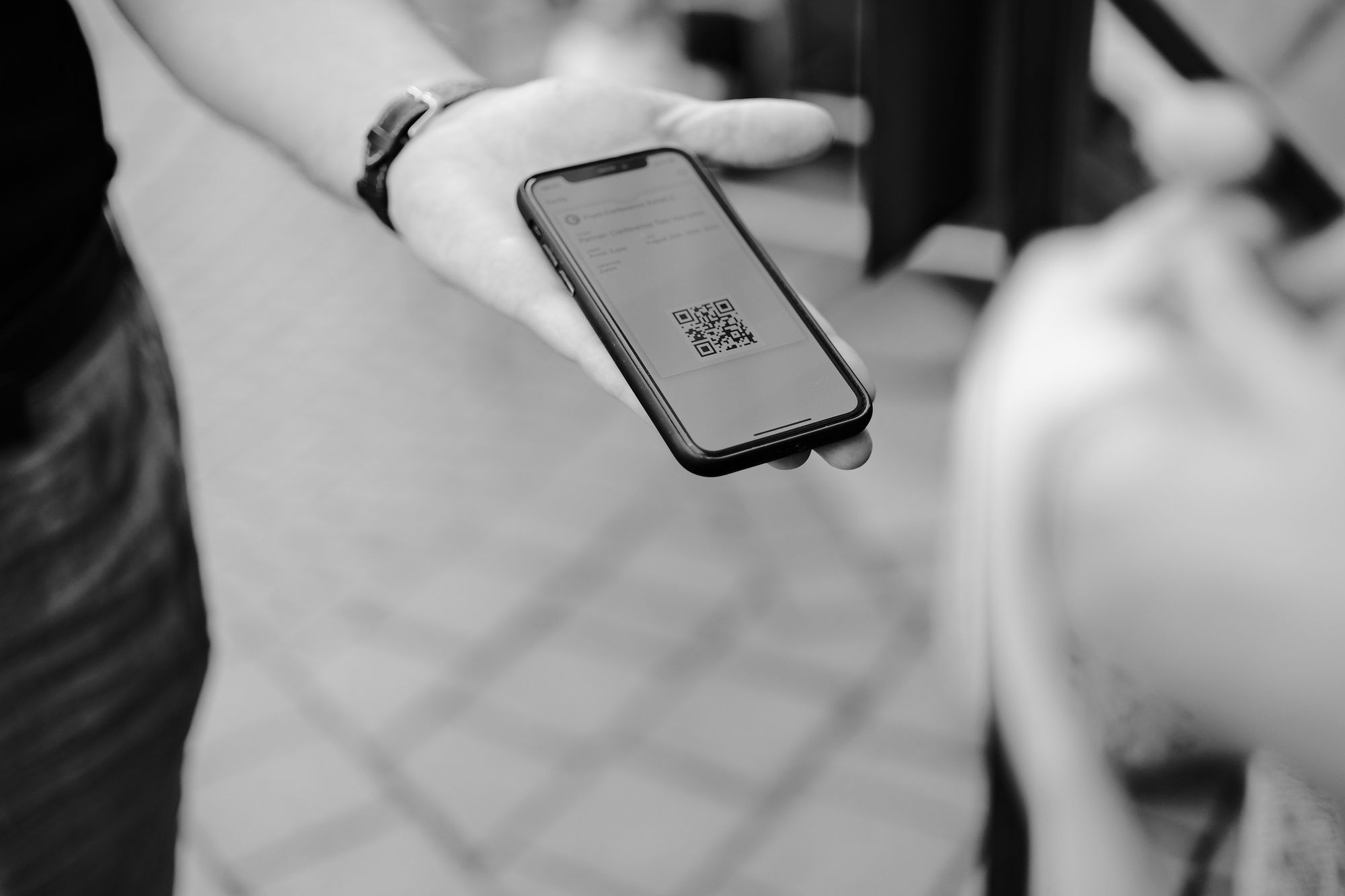
QR codes perform the same function—but with minimal hardware requirements. An establishment can simply display a QR code, and a customer can access the embedded information just by scanning the code with their smartphone. From WiFi passwords at cafés to nutritional information on restaurant menus, QR codes ease the flow of information.
Comparison Between NFC and QR Codes
User Experience
User experience is a crucial factor when deciding between NFC and QR codes. After all, no matter how innovative a technology is, if it doesn't make life easier for the user, adoption will be slow and grudging.
NFC - User Experience

NFC's primary strength lies in its ease of use - just bring your device close to an NFC tag, and you're done.
This "tap and go" experience is inherently user-friendly, saving consumers the need to navigate menus or scan anything with their camera.
This near-instantaneous transfer of information makes NFC an attractive choice for applications demanding speed, such as contactless payments and public transportation systems.
QR Codes - User Experience
On the other side, QR codes, while not as slick and quick as NFC, are still relatively easy to use. Most modern smartphones come equipped with built-in QR scanners in their cameras.
Just point the camera at the QR code, and a link or prompt will appear to access the embedded information. It's a relatively straightforward process, but it does require an extra step compared to NFC.
So, when weighing 'QR code vs. NFC' in terms of user experience, NFC might have the upper hand with its smooth 'tap and go' capability, whereas QR codes still offer a reasonably intuitive and straightforward experience.
Cost and Availability
Another deciding factor for many businesses is the cost and availability of the technology.
NFC - Cost and Availability
NFC tags are more expensive than QR codes - primarily because they are physical products that need to be manufactured and, depending upon the application, embedded in some other product like a business card or poster.
On the availability front, NFC requires a compatible device, which means some consumers may not have access to NFC-enabled smartphones. Though NFC-enabled smartphones are becoming increasingly common, it is not 100% ubiquitous.
QR Codes - Cost and Availability
When we talk about QR codes, the situation is markedly different. QR codes are merely images that can be printed out, making them extremely cost-effective. All you need is a printer and a means of getting your QR code design (which can be quickly generated online for free in many cases) into a printable format.
In terms of availability, any smartphone equipped with a camera and the requisite software (which most have these days as standard) can scan and interact with a QR code. This makes QR codes universally accessible and an attractive choice for marketers hoping to reach a broad audience.
So, while discussing 'QR code vs. NFC' in terms of cost and availability, QR codes emerge as the winner due to their lower cost and broader accessibility.
Flexibility
Flexibility is another critical factor to consider, as it often ties in closely with user experience.
NFC - Flexibility
NFC has the benefit of being a two-way communication technology. This means an NFC-enabled device can both read from and write to NFC tags. But there's a certain physical limitation - the target device must be within proximity (usually within a few centimeters) of the NFC tag to facilitate communication.
QR Codes - Flexibility
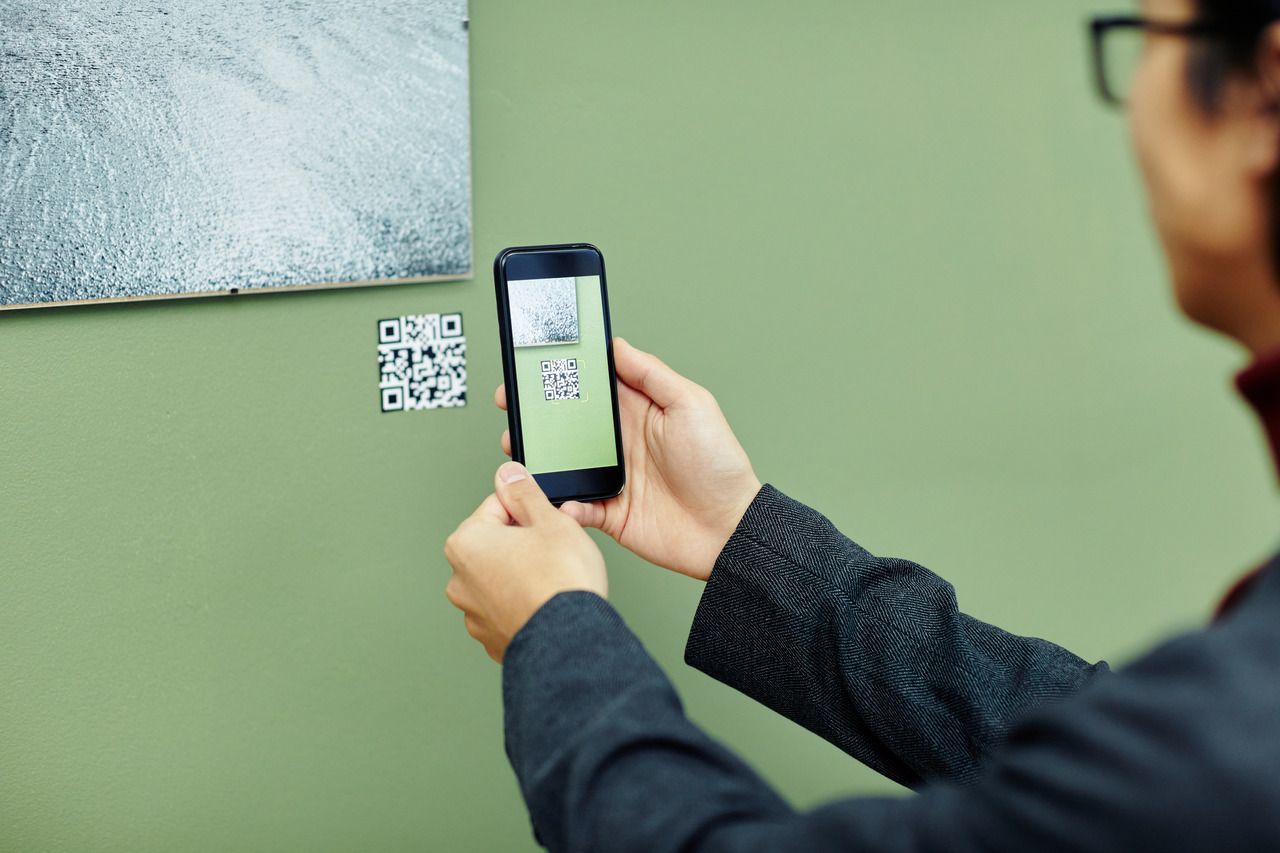
Compared to NFC, QR codes are readable from a greater distance as long as the reader has a clear line of sight to the code.
Although QR codes don't support two-way communication, their ability to link to virtually any type of digital content makes them a highly flexible tool.
The possibilities are endless, from directing users to a website, revealing a special offer, or initiating a download.
Thus, the QR code vs. NFC debate leans toward QR codes when it comes to flexibility, given their broad scope of applications and superior range.
In essence, when juxtaposing NFC with QR codes, NFC seemingly provides a smoother user experience, while QR codes prevail in terms of cost, availability, and flexibility. Hence, deciding between the two mostly comes down to the specifics of your use case, target audience, and budget.
The Pros and Cons of NFC Tags vs. QR Codes
It's time to more closely evaluate NFC and QR codes in terms of their pros and cons.
While both provide unique advantages that have helped them fit seamlessly into various aspects of our lives, they also come with their limitations. This balanced understanding is key in our NFC vs. QR Code analysis.
Pros of NFC
- User-friendly: NFC offers a seamless 'tap and go' experience, making complex tasks like mobile payments a breeze. There's no need to navigate through apps or menus—just a quick tap will do the job.
- Secure: With its inherent read/write protection and encryption capabilities, NFC can provide a secure digital handshake between devices. This makes it ideal for sensitive applications such as contactless payments, ticketing, and identification.
- Versatile Communication: As it supports peer-to-peer communication, NFC can handle a variety of data formats and types. Unlike QR codes, NFC can both read data from and write data to NFC tags, making the communication process more flexible.
- Real-time Updates: With NFC, the data on the tags can be updated in real-time, offering dynamic content to users. This feature is especially useful in advertising campaigns.
- Improved Customer Engagement: NFC carries the potential to offer an interactive and engaging customer experience. For instance, an NFC-tagged movie poster can allow users to watch the trailer instantly on their phone, keeping them engaged and increasing the likelihood of ticket sales.
Cons of NFC
- Hardware Dependent: Unlike QR codes, NFC requires both an NFC-enabled device and an NFC tag for communication. Not every smartphone or device is equipped with NFC capabilities, limiting its reach to a certain extent.
- Cost: Manufacturing NFC tags involves a certain cost, making them more expensive than QR codes. If you're considering large-scale deployments or have budget constraints, this could be a significant factor in your decision-making process.
- Limited Range: NFC operates only within a very close range, typically a few centimeters. So, to interact with an NFC tag, users have to physically tap or bring their device very close to the tag.
Pros of QR Code
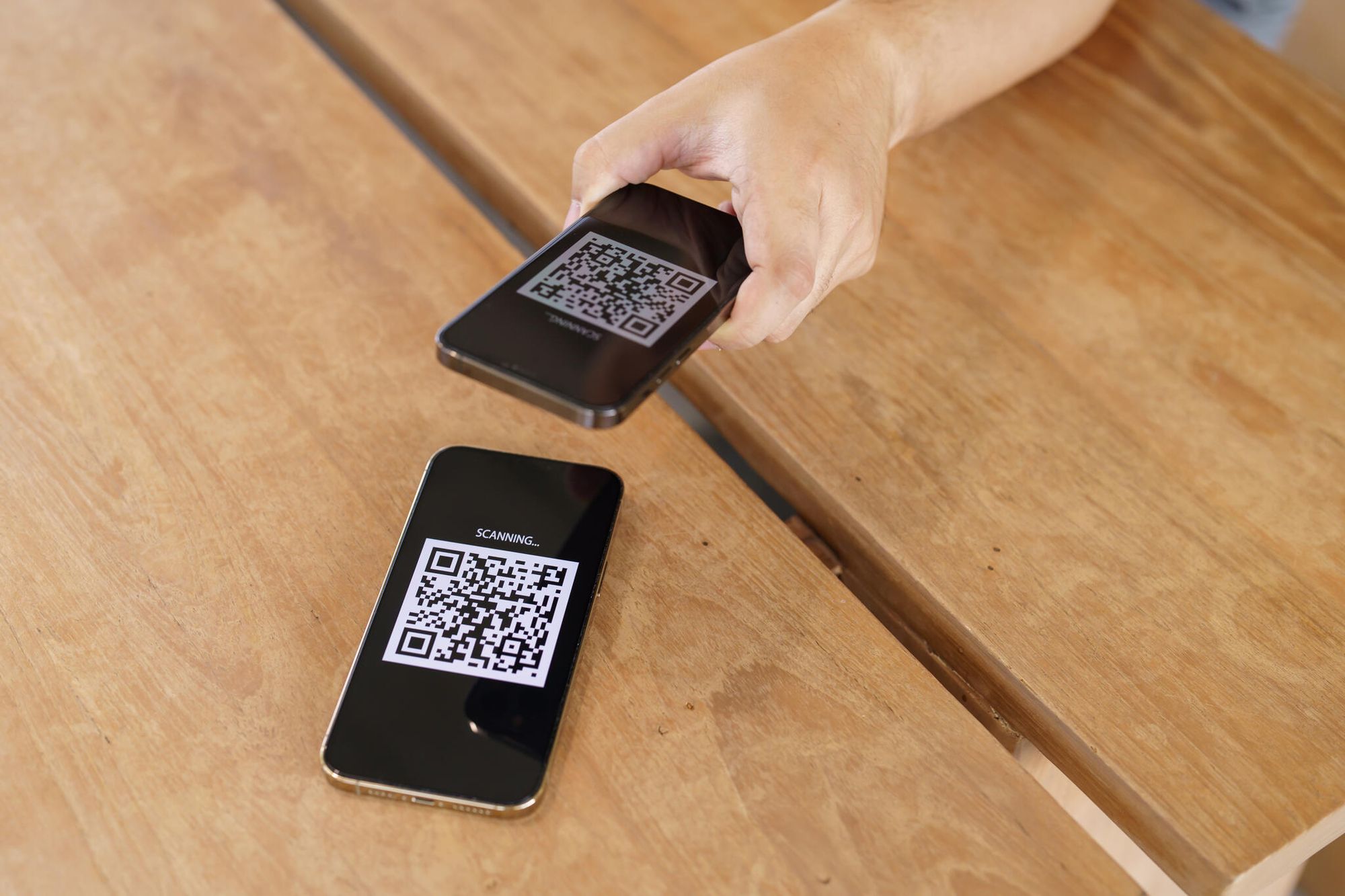
- Easy to Generate and Implement: QR codes are just images that can be created using various free online tools. They are easy to print and implement, requiring no special equipment or tags.
- Highly Accessible: Any device with a camera can scan a QR code. With smartphones being nearly universal, QR codes provide widespread accessibility.
- Cost-Efficient: QR codes are very cost-effective to produce. This makes them suitable for businesses of all sizes, especially small and medium-sized businesses working with tight budgets.
- Versatile Applications: From websites to contact details to media files, a QR code can link to virtually any digital content. This broad gamut of applications presents significant flexibility to marketers and businesses.
- Readable from a Distance: You don't have to physically contact a QR code to scan it, representing an advantage in situations where direct contact isn't possible or practical.
Cons of QR Code
- Requires a QR Reader: To scan a QR code, users will need a QR reader. While many modern smartphones come with built-in QR readers, not all do, which might require users to download an additional app.
- Dependency on Camera Quality: Although QR codes can be read from a distance, the clarity of code reading can depend on the quality of the camera on a user's device. This can impact the user experience, particularly for users with older devices.
Factors to Consider in Deciding Between QR Code and NFC
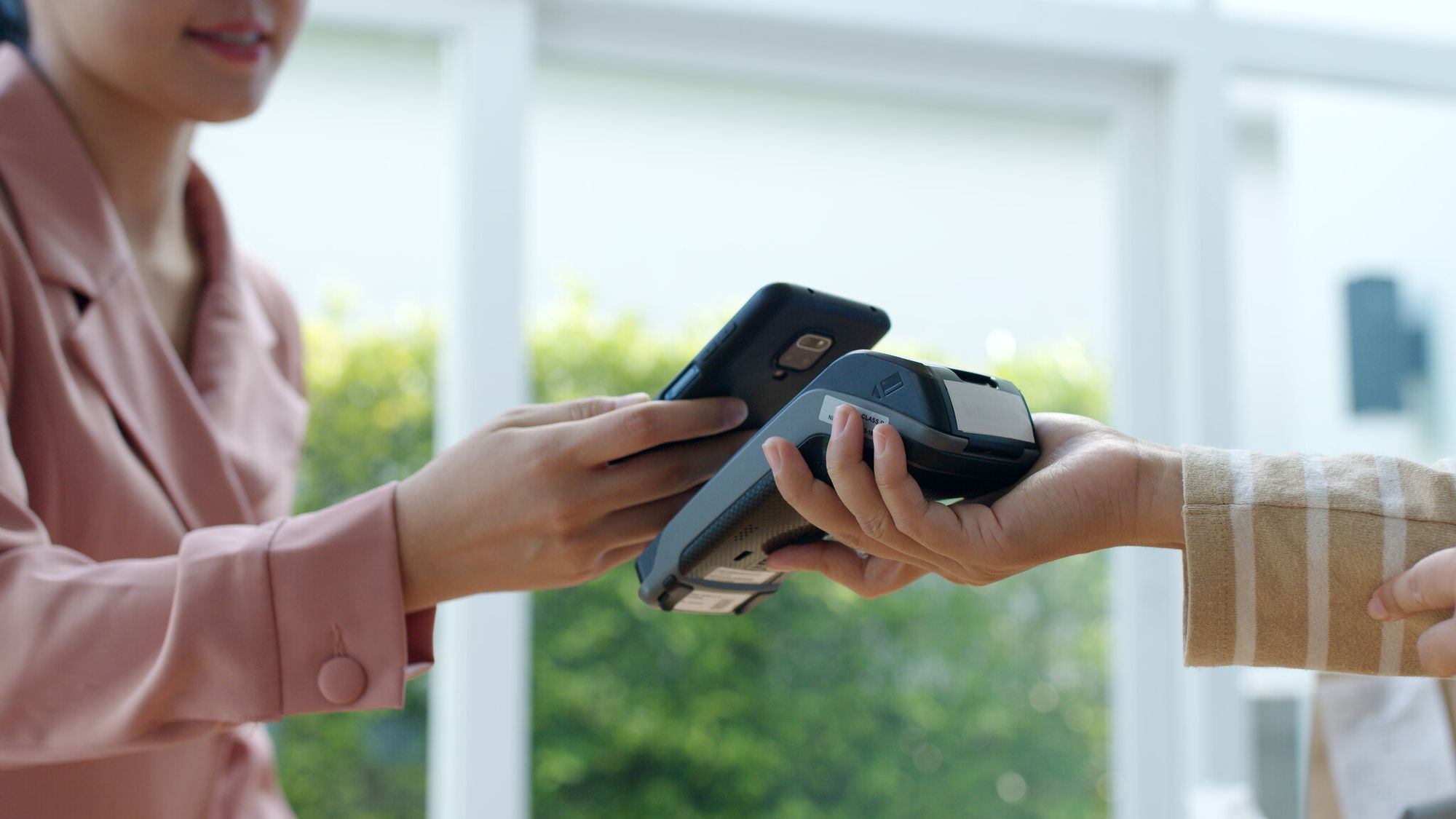
When choosing between a QR Code and NFC, it's important to consider various considerations, such as your target audience's operating system, their age demographic, the cost to your company, your branding strategy, and the point of interaction of the technology.
By understanding these, you can make an informed decision that will serve your business best.
OS Dominating Your Audience Segment
The type of operating system (OS) that dominates your audience segment plays a crucial role when deciding between 'QR code vs. NFC.'
NFC is intrinsic to Android and iOS devices, with Android offering more extensive capabilities due to its Android Beam functionality. This feature allows two NFC-enabled Android devices to exchange files and data simply by bringing them close together.
However, not all smartphones are NFC-enabled. Generally, mid-range to high-end smartphones come with NFC. So, if your audience primarily uses such devices, NFC could be the way to go.
On the other hand, QR codes are not OS-dependent. Whether your audience is using an Android or iOS device, as long as they have a QR reader (most camera apps these days have built-in QR scanners), they can easily interact with QR codes. This makes QR codes a more universally compatible option.
Age Demographic
The age demographics of your audience can significantly influence your decision between 'QR code vs. NFC.'
Younger generations, who are often more tech-savvy and open to adopting new technologies, may find the interactive nature of NFC more engaging. The convenience of tapping their smartphones to transfer data, make a payment, or access information quickly and efficiently suits their fast-paced lives.
However, older demographics who are generally less comfortable with novel technology may favor QR codes as they have been around longer and are relatively straightforward to use.
Cost to the Company
Undoubtedly, budget considerations come into play when making your choice. On the surface, QR codes are a more affordable option, considering they're essentially just images that can be generated for free and printed anywhere.
However, deploying NFC could mean more investment in terms of embedding NFC chips in business cards or product packaging. However, this could potentially offer a higher return on investment (ROI) through an enhanced user experience, particularly for ventures where quick data transfer is essential.
Branding
How you want your brand to be perceived also plays a part in your decision. If your brand values innovation, cutting-edge technology, and interactive customer experiences, then NFC could be a better fit. NFC can help elevate your brand's image to that of an industry leader, staying ahead of the trend curve.
If your brand values accessibility, inclusivity, and reach, then QR codes could be the way to go. QR codes' universal compatibility and ease of use can help ensure that no one is left out when interacting with your brand.
Point of Interaction
Finally, consider the context or the point of interaction for the end-users. NFC requires close proximity, which makes it an excellent choice for contactless transactions or when the physical touch point for the interaction makes sense (e.g., business cards, posters, product packages).
QR codes, however, with no need for physical contact, could find favor where the scanners and codes might not be in immediate proximity (e.g., billboards, print advertisements).
Usage Diversity & Market Penetration of QR Codes and NFC

In the 'QR code vs. NFC' debate, both technologies find myriad fertile ground across industry verticals where they have bloomed in full potential. Here's an overview of how they've created a significant impact in key sectors.
On the Product
NFC on the Product
NFC technology is finding its place directly on products, especially those in retail spaces. For instance, NFC-enabled clothing items can provide users with information about fabric care, styling tips, or even a direct link to buy the product online for a seamless omnichannel experience.
In the entertainment industry, NFC-enabled DVDs or video games can provide additional content or previews to users with a simple tap of their smartphone, enriching their purchasing experience.
Moreover, NFC can also be used for product authentication, helping businesses fight counterfeits and consumers verify the legitimacy of their purchased products.
QR Code on the Product
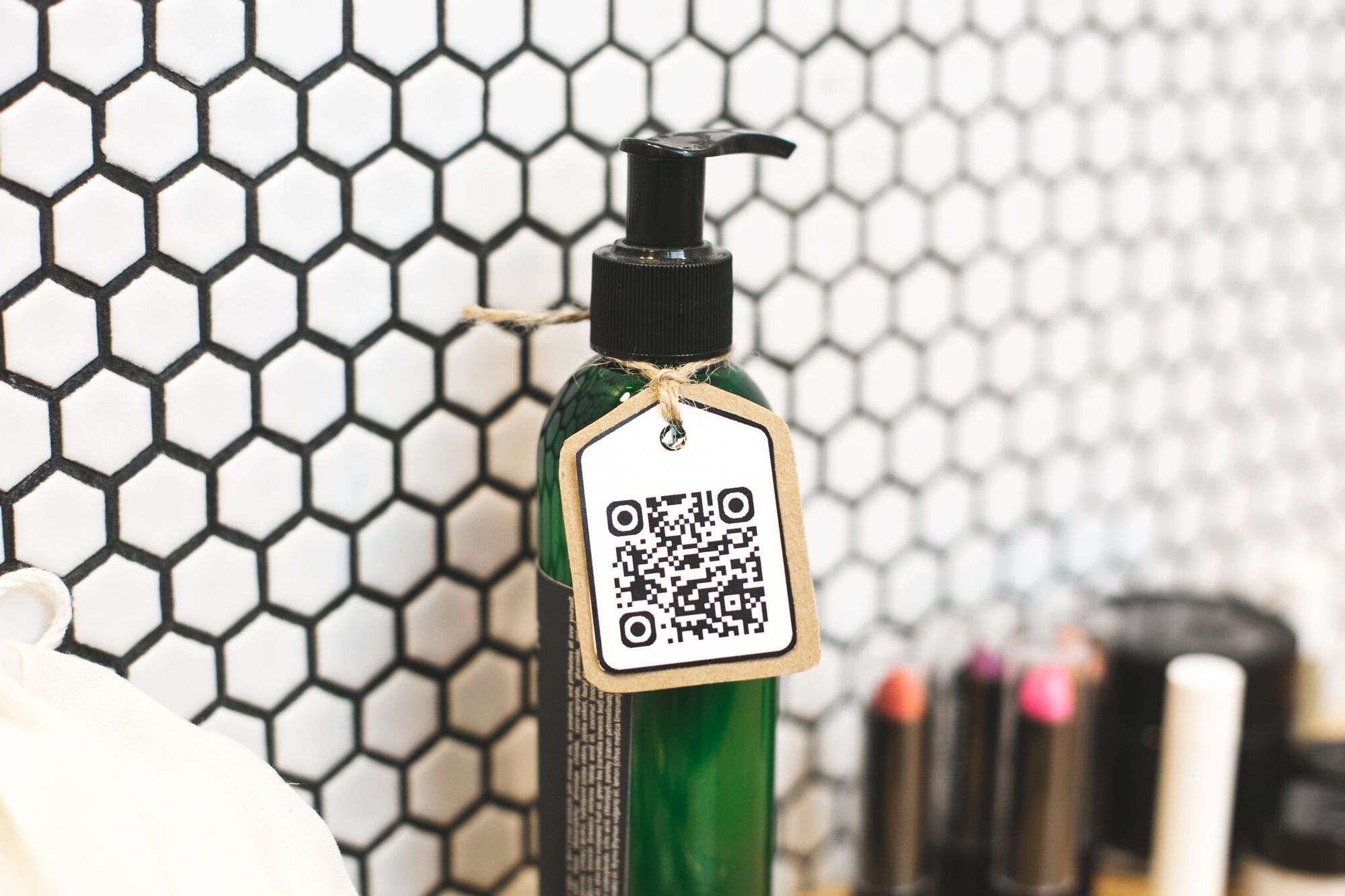
QR codes have proved equally versatile on product packaging. A scan of a QR code on a food product can take the consumer to a webpage full of nutritional information, cooking instructions, or recipe ideas.
In the case of apparel, it could offer information about the source of the material, ethical manufacturing practices, or even style inspirations.
Furthermore, similar to NFC, QR codes are also used for product authentication. Scanning a QR code can confirm whether the product is genuine, enhancing consumer trust in the brand and preventing counterfeiting.
Marketing Material
NFC in Marketing Material
NFC tags in marketing materials can transform them into dynamic, interactive tools. With just a tap, a poster can offer a promotional video, and a brochure can provide the latest product catalog or a business card can save contact details directly in the customer's phone.
NFC allows businesses to express their creativity while making the marketing experience more engaging and memorable.
QR Code in Marketing Material
Likewise, QR codes have revolutionized traditional marketing materials. Flyers, catalogs, business cards, or billboards can house a QR code. A quick scan can lead customers to a website, a social media page, a promotional offer, or any other form of relevant digital content.
The ability of QR codes to bridge the physical and digital worlds provides a new level of interactivity, encouraging user engagement and thereby leaving a lasting impression.
Out-Of-Home Advertising
NFC in OOH Advertising
The use of NFC in outdoor advertising presents a world of opportunities. NFC tags on billboards or posters in public spaces like bus stops or metro stations can provide access to exclusive content, discounts, or website links.
The interactivity offered by NFC allows businesses to bring static outdoor advertisements to life, making them more appealing to consumers.
QR Code in OOH Advertising
Similarly, implementing QR codes in out-of-home advertising promotes user interaction on the go.
A passerby can quickly scan a QR code on a billboard to get more information about the featured product or service or even make a direct purchase. This strategy helps brands capitalize on impulse buying while providing consumers with a seamless shopping experience.
Indoor Advertising
NFC in Indoor Advertising
Indoor advertisements, like in-store posters or product displays equipped with NFC, add a layer of rich user experience. Shoppers tapping their smartphones can access detailed product information, promotional offers, or even virtual fitting rooms. It's a strategy that merges the convenience of online shopping with the tactile appeal of offline retail.
QR Code in Indoor Advertising
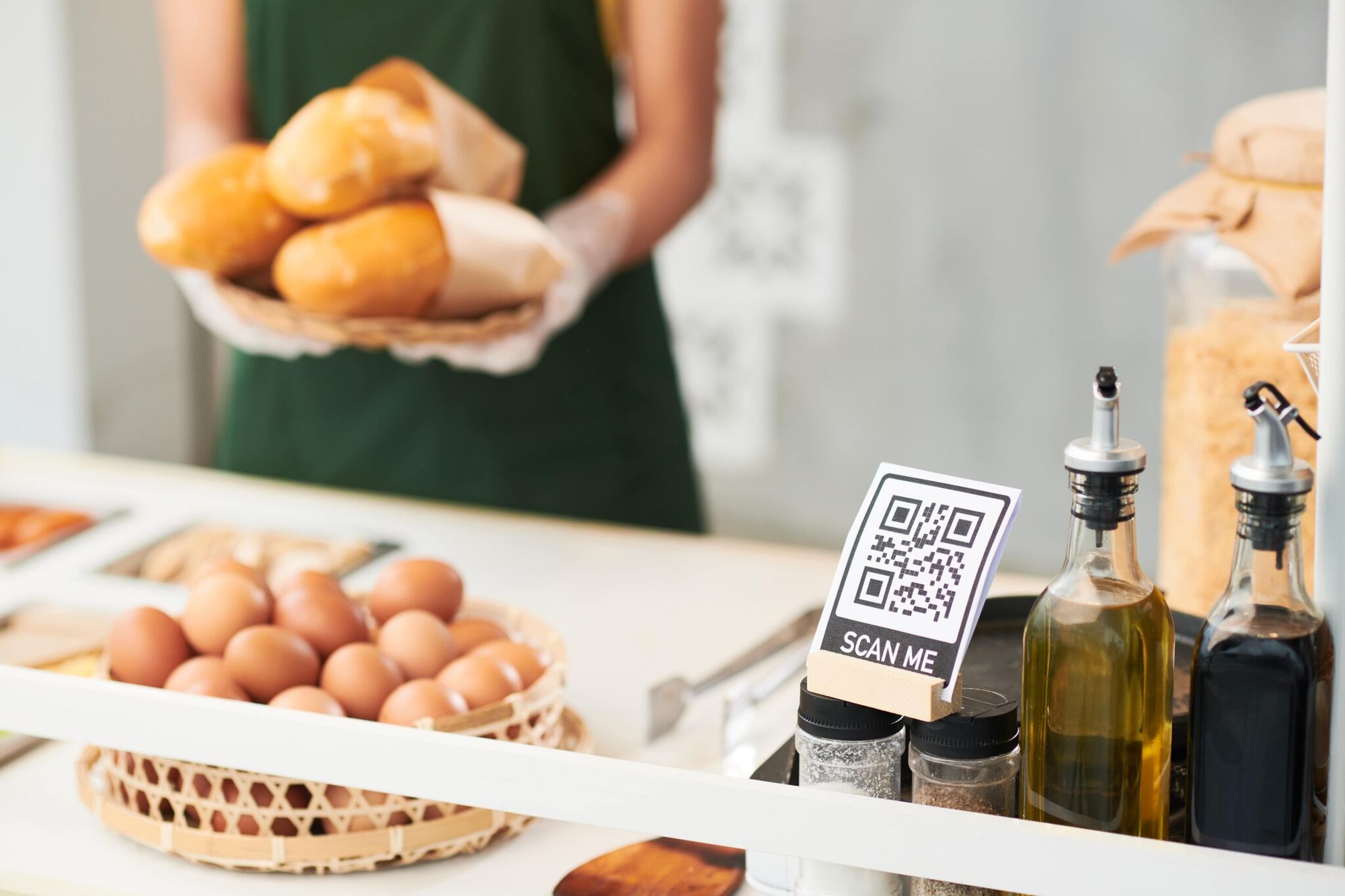
Parallelly, QR codes are making waves in indoor advertising as well. QR codes on in-store signage or product shelves can provide additional information about products, access to customer reviews, or options to shop online. For restaurants, a QR code on the table can let customers view the digital menu, order their meals, or even pay their bills.
QR codes enable businesses to deliver enhanced customer experiences by providing them with a wealth of information at their fingertips without needing to engage store staff.
Examples of When to Use Which Technology
There are countless instances when QR codes and NFC tags prove beneficial. Below, I'll delve into some examples that effectively showcase the unique characteristics and benefits of both.
QR Code Use Cases
In Retail Stores
Retail shops put QR codes on supply shelf tags to offer customers more information about products. When scanned, the QR code could display product reviews, user manuals, or a link to purchase the product online. It may also allow you to compare prices or save products for later purchase.
In Restaurants
QR codes have revolutionized restaurant dining in the COVID-19 pandemic era. A QR code scan on the table pulls up a digital menu, allowing customers to order and pay without physical contact. This has improved safety standards and streamlined the ordering process, improving the diner's experience.
In Realtor Signages
Real estate signages leverage QR codes to provide potential buyers with immediate access to a property's details. Scanning the QR code can take you to a webpage with images, property specifications, pricing, and contact information for the real estate agent. This makes it convenient for potential buyers to get all the details instantly, even outside of open house hours.
In Music Concerts & Events
QR codes on concert tickets make the entry process faster and more organized and prevent ticket fraud. Additionally, scanning a QR code can allow concert-goers access to band bios, setlists, merchandise sales, and more - amplifying the concert experience.
NFC Tag Use Cases
In Public Transport
NFC proves to be a remarkable technology in public transportation. For instance, in London's Underground, travelers tap their Oyster card (NFC-enabled card) or their NFC-enabled smartphone on a reader to pay for their journey. NFC ticketing systems guarantee a seamless, quick, and convenient travel experience, reducing queues and waiting times.
In Health Care
Hospitals, clinics, and other healthcare facilities are using NFC tags to streamline patient care. For example, an NFC tag on a patient's wristband can give healthcare professionals immediate access to their medical history, prescription medications, and other crucial information, ensuring accurate and efficient treatment.
In Contactless Payments
NFC is the driving force behind popular mobile payment systems like Apple Pay and Google Wallet. By simply tapping your NFC-enabled phone on an NFC point-of-sale terminal, you can carry out a secure, contactless payment. This convenience of 'tap and pay' makes NFC a preferred choice for many consumers.
In Interactive Marketing Campaigns
Interactive marketing campaigns often employ NFC to increase customer engagement. For instance, a product display with an embedded NFC tag could lead to an immersive AR (Augmented Reality) experience of the product when a customer taps their smartphone against it. This not only intrigues and involves the customer in the product but also increases the likelihood of purchase.
Deciding Which Technology to Use for Your Case

Making the right choice between QR codes and NFC comes down to your specific circumstances, the needs of your target audience, and what you aim to achieve.
Based on the multitude of applications we've gone through, you can see that both QR codes and NFC have incredibly diverse capabilities, making the 'QR code vs. NFC' decision quite use-case-specific.
If your goal is to push out a marketing campaign quickly and cost-effectively at a broad scale, QR codes are hard to beat. They are easy to generate, compatible with any smartphone with a camera, and can be seamlessly integrated into a wide array of media - be it print or digital.
Conversely, if your use case revolves around offering an ultra-smooth, interactive user experience (UX), NFC can be your go-to tool. The ease and speed of simply tapping to transact, connecting devices, or unlocking content creates an impressive UX, which can translate to higher consumer satisfaction and engagement.
In the realm of event management, for instance, NFC-based systems ensure a swift and smooth process in areas like attendee tracking, instant payments, and delegate engagement, thereby enhancing the overall event experience.
QR codes, on the other hand, are perfect for letting attendees access event programs, digital business cards, or directions to meeting rooms without having to download an app.
The crux is closely evaluating your specific situation and needs, keeping your end-user at the forefront. Then, determine whether the QR code's wide accessibility and versatility or NFC's high interactivity and real-time functions satisfy those requirements better.
QR Codes and NFC for Marketing Use Cases
In terms of marketing and SEO, the 'QR code vs. NFC' debate takes on more dimensions. While NFC offers an engaging and super-smooth experience, QR codes can offer marketers a bigger bang for their buck with their broader reach, lower cost, and higher adaptability.
QR codes can direct users straight to a webpage, maximizing your SEO efforts. They are also easier to track, which could give you important insights into your marketing performance. Additionally, the universality of QR codes across different operating systems (Android, iOS) is simply unmatched, making it incredibly inclusive.
NFC tags, although currently limited to high-end smartphones, offer brands an opportunity to create an immersive experience that connects both the digital and physical worlds, which is particularly effective in experiential marketing.
Wrap Up
After an extensive exploration of both technologies, QR codes, and NFC, it's clear that both have carved their unique niches in today's digital world. When it comes to deciding which to use for your business, a myriad of factors come into play.
QR codes are undeniably versatile, cost-effective, and universally compatible - characteristics making them a reliable and efficient tool for many applications.
If your priority is to reach a broad and diverse audience without breaking the bank, QR codes outshine NFC.
In a nutshell, the decision between 'QR code vs NFC' significantly depends on your unique situation, the complexity of your use cases, and the expectations of your end-users. The right way to go does not inherently lie with one or the other; it's situated at the intersection of your business's needs, your audience's demands, and the evolving digital climate.


